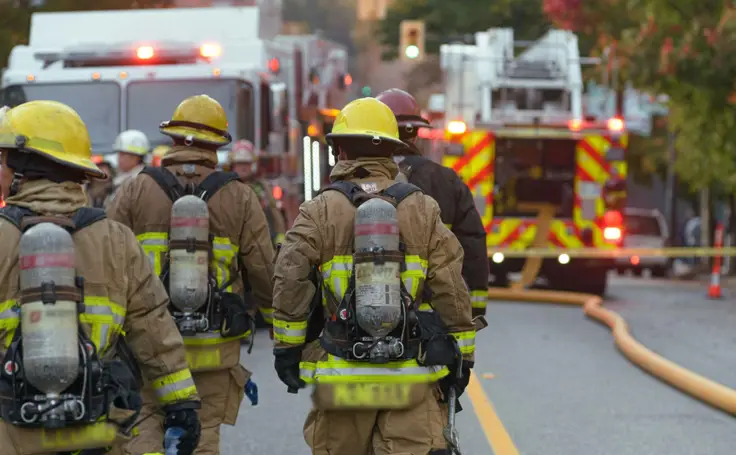Effective communication is essential for fire departments to maintain public trust, ensure safety, and respond to emergencies with clarity. As Gerald Fogel highlights, press releases play a central role in this effort, serving as official statements that inform residents, engage media outlets, and present an accurate narrative during routine operations and major incidents.
Understanding the components, tone, timing, and structure of these messages ensures they deliver maximum impact. Additionally, utilizing tools like templates and avoiding common errors helps departments maintain credibility and streamline communication during high-pressure situations.
Role of Press Releases in Fire Department Communication
Fire departments rely on press releases to share important information with the public and the media. These statements help clarify department actions, notify the community about emergencies, and promote safety initiatives.
During events like structure fires, road closures due to accidents, or fire prevention campaigns, timely communication builds trust and keeps residents informed. A well-written release can also highlight department milestones, such as new hires or promotions, reinforcing transparency and community engagement.
In some cases, press releases help correct misinformation circulating through unofficial sources. When details come directly from the department, the public receives clear and reliable updates. These communications also support local journalism by offering verified content that informs accurate reporting.
Core Components of a Strong Press Release
A compelling press release starts with a headline that’s both informative and attention-grabbing. It should immediately convey the subject of the release in a way that encourages the reader to continue. A title like “Fire Department Contained Warehouse Blaze on River Street” provides clarity and context in just a few words.
The opening paragraph should quickly summarize the key facts, giving readers a snapshot of the event or announcement, including the who, what, when, where, why, and how, which ensures the message is complete and useful. A quote from the fire chief or a public information officer can add credibility and a human touch, especially during high-impact incidents.
Releases should be tailored to the situation. A brief notice about a fire drill will differ in tone and detail from a statement on a multi-alarm fire. Each should be structured to serve its purpose while staying concise and factual. Even during routine updates, maintaining clarity and consistency helps build stronger public awareness.
Writing Style and Readability
Fire department press releases should be written in plain language that anyone can comprehend. Avoiding industry-specific jargon ensures the message is accessible to the general public, including those unfamiliar with firefighting terminology. This approach also helps reach non-native speakers and younger readers.
The tone should remain calm and professional, especially when covering sensitive events such as injuries or fatalities. Readers appreciate clarity without sensationalism. A respectful tone helps maintain the department’s credibility while showing consideration for those affected. This is especially important during emotionally charged situations where public perception can shift rapidly.
Short, direct sentences improve readability, particularly on mobile devices or in busy newsrooms. Clear writing allows the essential information to stand out, reducing the chance of misinterpretation.
Formatting and Structure
A clean format helps your message get noticed and taken seriously. Press releases should be easy to scan, with short paragraphs and clear sections. Use subheadings sparingly to break up content when appropriate, especially in longer announcements. Bold type or spacing can guide the reader’s eye through the content more efficiently.
Placing the most important information at the beginning allows busy reporters to quickly grasp the story. Contact information should always be positioned at the end, making it simple for media professionals to follow up.
Press releases that follow a consistent structure are more likely to be published or referenced by local news outlets. Including a short boilerplate description of the department at the end adds context for unfamiliar audiences.
Timing and Distribution
When a press release goes out, it can be just as important as what it says. Sending an update during early morning hours on weekdays typically increases the chances of it being picked up by newsrooms. During active incidents, real-time updates shared through digital platforms help keep the community informed and can direct traffic away from danger zones. Timely updates also reduce speculation and prevent the spread of rumors.
Departments often distribute releases through a combination of email lists, official websites, and social channels. Targeting local journalists who regularly cover public safety ensures that the message reaches a relevant audience. Partnering with city communication teams or neighboring agencies can also extend the reach and back a unified public message.
Common Pitfalls
One common mistake is including information that hasn’t been confirmed, which can lead to confusion and public mistrust. Overly complex language or long-winded explanations can also reduce the effectiveness of the release. Always take time to review and revise before publishing.
When the message is clear and accurate, it reflects positively on the department’s professionalism. Another frequent oversight is neglecting to proofread for grammar or factual accuracy, which can undermine confidence in the department’s messaging.
Also Read: Custom Vs. Standard Radio Straps: What Works Best for Firefighters?



